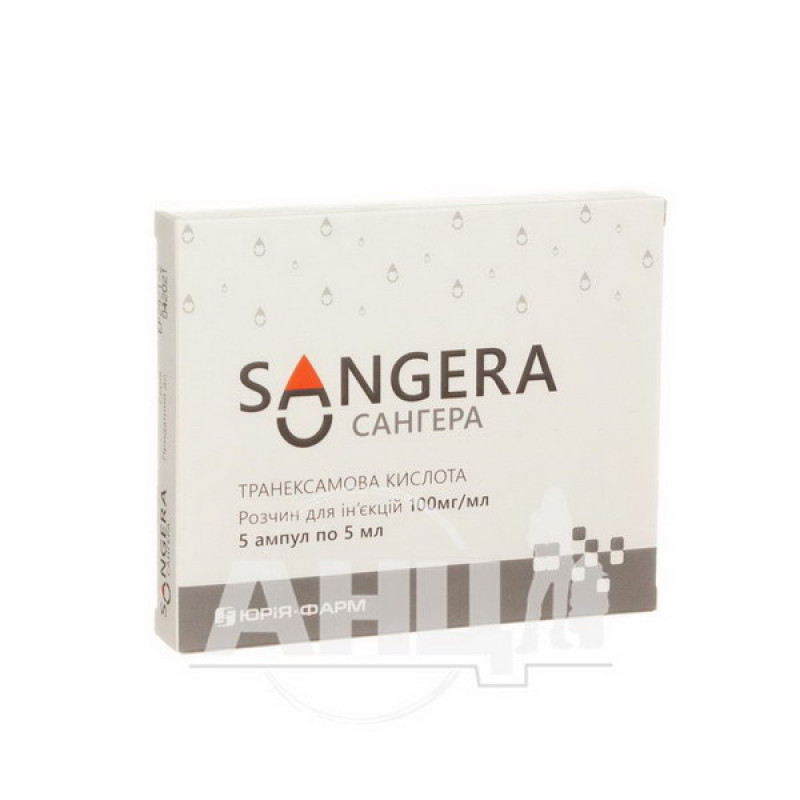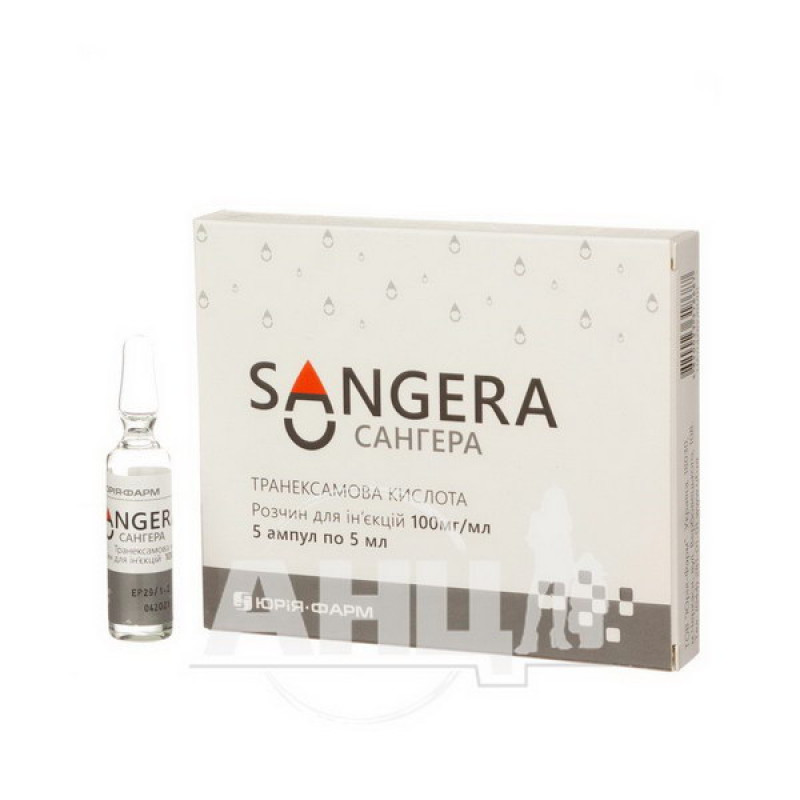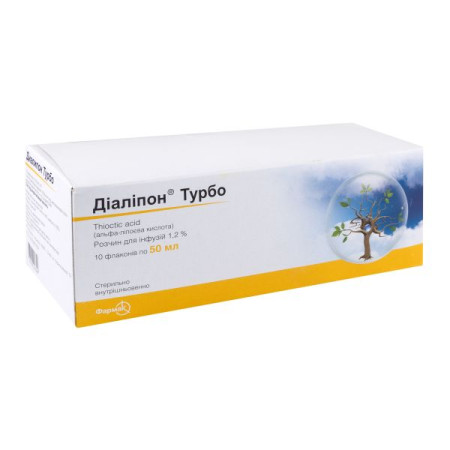Sangera solution for injection 100 mg/ml ampoule 5 ml No. 5

Sangera Injection is indicated for the treatment of bleeding or risk of bleeding with increased fibrinolysis, both generalized and local, in adults and children over one year of age; specific indications include:
Bleeding due to increased general or local fibrinolysis, such as: menorrhagia and metrorrhagia; gastrointestinal bleeding; hemorrhagic urinary tract disorders that have arisen in connection with surgery on the prostate gland or as a result of surgical intervention or procedures on the urinary tract; otolaryngological (adenoid removal, tonsillectomy) and dental (tooth extraction) surgical interventions; gynecological operations or complications in obstetric practice; thoracic, abdominal and other major surgical interventions, such as cardiovascular surgery; control of bleeding in connection with the administration of a fibrinolytic drug.Composition
The active substance is tranexamic acid (1 ml of solution contains tranexamic acid 100 mg).
The excipient is water for injection.
Contraindication
Hypersensitivity to the active substance or to any of the components of the drug; color vision impairment; acute venous or arterial thrombosis; fibrinolytic states due to depletion coagulopathy, except for states with excessive activation of the fibrinolytic system in acute severe bleeding; severe renal failure (there is a risk of drug accumulation); history of seizures; subarachnoid hemorrhage; intrathecal and intraventricular injection, intracerebral injection (risk of brain edema with subsequent development of seizures).Method of application
Sanger injection solution should be administered intravenously (drip, jet).
The administration has a strictly limited mode - slow administration (injection / infusion).
Sangera can be mixed with most infusion solutions, such as electrolyte solutions, carbohydrate solutions, amino acid solutions, and dextran solutions.
Adults
For local fibrinolysis, it is recommended to use the drug starting at a dose of 500 mg to one g slowly (approximately 1 ml/minute) 2-3 times a day.
In case of generalized fibrinolysis, tranexamic acid should be administered intravenously slowly at a dose of 1 g or 15 mg/kg of body weight every 6-8 hours, the rate of administration is 1 ml/minute.
Dosage for patients with renal impairment
In case of renal insufficiency, which leads to a risk of accumulation, the use of tranexamic acid is contraindicated in patients with severe renal insufficiency. For patients with mild or moderate renal insufficiency, the dosage of tranexamic acid should be reduced according to serum creatinine levels.
Dosage for patients with hepatic impairment
No dose adjustment is required for patients with impaired liver function.
Use in children
For children aged one year and older, use as indicated, dosage is about 20 mg/kg/day. However, data on efficacy, safety, and dosage features when used in children for the indicated indications are limited.
The efficacy, dosage, and safety aspects of tranexamic acid in children undergoing heart surgery have not been fully studied.
The maximum single dose for children aged one year and older is 10 mg/kg of body weight.
The maximum daily dose is 20 mg/kg body weight.
Use in elderly patients
Usually, dose adjustment is not required in the absence of signs of renal insufficiency.
Application features
Pregnant women
Women of reproductive age should use effective contraception during treatment. Clinical data on the use of tranexamic acid in pregnant women are insufficient. During the first trimester of pregnancy, the use of tranexamic acid is not recommended as a precautionary measure.
There are only limited clinical data on the use of tranexamic acid in various clinical hemorrhagic conditions during the II and III trimesters of pregnancy, from which it is impossible to identify a harmful effect on the fetus. Tranexamic acid should be used during pregnancy only if the expected therapeutic benefit outweighs the potential risk.
Tranexamic acid passes into breast milk. Therefore, breastfeeding is not recommended.
There are no clinical data on the effect of tranexamic acid on fertility.
Drivers
There are no studies assessing the effect on the ability to drive vehicles or other mechanisms.
Overdose
No cases of overdose were observed.
Symptoms of overdose may include dizziness, headache, hypotension, and seizures (convulsions). It has also been shown that seizures tend to occur more frequently with increasing doses.
Treatment of overdose is symptomatic.
Side effects
Immune system disorders: not known - hypersensitivity reactions, including anaphylactic-type reactions.
Nervous system: unknown - convulsions, particularly in case of improper use.
On the part of the organs of vision: unknown - visual impairment, including color vision impairment.
On the part of the digestive system: often - diarrhea, nausea, vomiting.
Skin and subcutaneous tissue disorders: uncommon - allergic dermatitis.
Interaction
Tranexamic acid for injection should not be added to blood for transfusion or to injection solutions containing penicillin drugs.
Storage conditions
Store in the original packaging at a temperature not exceeding 25 °C, out of the reach of children.
Shelf life - 2 years.
There are no reviews for this product.
There are no reviews for this product, be the first to leave your review.
No questions about this product, be the first and ask your question.








